In my last post, I talked about the origins of modern rune magic and the importance of the stories we connect with when working magic. In this post, I’m going to talk about my modern rune magic practice and some of the ways in which I use rune magic in my everyday life.
My Introduction to the Runes
As ridiculous as it may sound, my first exposure to the runes was in primary
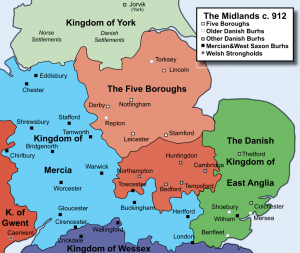
school at around the age of eleven. Back then our history classes focused on an era per school term, so we spent an entire term learning about the Vikings. Growing up in what was once the Danelaw, the history felt more immediate. I think it’s always nice to know about where you live, to talk about historical things happening in familiar places. And it was in these classes that we also learned about the runes.
One of the things our teacher had us do during one of these classes, was to write a short essay in runes. We began with the Elder Futhark (with a few Anglo-Jutish additions to make transcription easier for us), but that was the start of it for me. It wasn’t long after that that I started to write on things in runes. I liked knowing a different alphabet and found them easy to write with and remember.
But it would be a while yet before I began to use them magically.
First Forays into Rune-ing It
My oldest magical journal goes back to 1998, and it’s here that I find the first references of rune magic in my practice. I was in my late teens back then, and on the whole, the Heathenry of those times was a lot less informed than the Heathenry of now. I was living in a backwards town that wouldn’t see its first coffee shop for another seven years, and my involvement in reconstructionism was just under a decade away. Despite being largely ignorant of the actual scholarship though (and absorbing a whole lot of dross),

I was deliriously happy soaking it all up anyway.
For those of you who weren’t around during this time, you have to understand how hard it was to find any information about Heathenry and/or magic at all in those days- especially if you grew up in a more rural area. And even when the internet became more widely accessible, it really wasn’t like how it is now. I mean, I’m talking about the days before Google existed here. So almost any source I could get my hands on was precious – even the junk. Printer access was also limited for me back then, and much of what I did find on websites and in library books had to be copied by hand.
But despite the lack of information, my rune divinations (which I performed using a set of runes I’d made out of oven-hardening clay), were shockingly accurate. I also started incorporating runes into what I would now recognize as petition papers and other forms of pen and paper magic. I used them to write charms and deity names when making offerings; visualized them and chanted their names; used them in shielding and protection, and for clearing spaces of unwanted guests; and enchanted with them to get work and escape bad situations.
If anything, I owe the life I have now to a combination of rune magic and fiber magic. And while my life isn’t perfect, it is measurably better than it was before. Embroidered rune magic put me on the path to the life I have now.
Early Stories
So as you might expect, I’ve done a lot of thinking about runes and how they work over the years.

The first stories I told myself about the runes and how they work were that the runes themselves were inherently magical. That there was something in the shape and sound of the rune that made things happen. And why wouldn’t I think that when there are so many proponents of that idea out there? Moreover, I’ve also always been a fan of fantasy books and movies – a genre which largely reinforces that idea of runes. When you get down to it though, this isn’t all that different from the ideas put forth by Marby and Kummer; that these letters are not just letters that you can write words with, but energy fields permeating the cosmos that can be tapped into. (Like I said in my previous post, their ideas are still very pervasive.)
Runes and Story: The Mythology I Connect With
So which “rune stories” do I connect with now? Well, there are a few layers to this.
On the mythological level, I connect with the story of a One-Eyed god who gave all humans breath hanging on the tree for nine nights in a quest to snatch up the runes from (probably) Hel. I also (and this is perhaps more relevant to
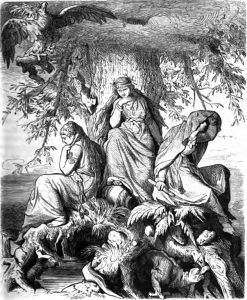
magic), connect with the story of how the Nornir inscribe the ørlög of every person on a slip and speak it into being before (presumably) dropping it into Urðarbrunnr to rest together with all the other slips of ørlög in the waters. And sure, we don’t know that the Nornir write on those slips in runes, but there’s something about it that fits.
The magical use of runes in the way that we use them now may not be historical, but that’s not to say that we can’t connect them with older stories anyway. There is value to emulating the divine in ritual and magic. As the Taittirya Brahmana says, ” Thus the gods did; thus men do”.
Nowadays I find myself thinking about the story or stories attached to the runes quite a lot. I’ve written a little about the magical qualities of story in this blog before. (You can find this in my posts on the Hellier phenomenon and the intersection of that story with that in The Chilling Adventures of Sabrina). Stories for me are inherently magical, and the more people buy into them, internalize and work with them, the more powerful that magic will be. And stories have never been more powerful; we now live in a world in which more people than ever before have access to books and mass media.
Runes and Story: The Rune Poems
On another level, the rune stories are the “stories” you find in the various rune poems. It’s possibly a stretch to call the short stanzas ascribed to each rune a “story” – they’re more like strange writing prompts if anything. But I’ve found they’re enough to spark the beginnings of story within the mind, stories that become enriched and filled out through time and experience.
The rune poems themselves have been theorized to have been created as mnemonic devices for the runes. But in some ways, I use the runes as mnemonic devices for the small “stories” of the poems. When I chant, visualize, create bindrunes, or stitch amulets, I am using the runes as visual and aural representations of the pieces of story that I’m weaving together. This is not so different from how I see and work with materia magica. For me, magic is about story, about bringing smaller stories together to either create or edit a larger metaplot.
Runic Touchstones
There’s also something very powerful about having a symbol or sound to focus on when working magic – especially when you’re working on a piece for a long time. It can give you something to focus on and come back to when your mind wonders. It can also give you something to cling to and put your faith in when scared, And for people who need things to be more concrete than abstract, having those things to hold onto can make all the difference (but more on that in a future post).
Rune Stories, Belief and Change?
But when you get into the realm of story, it’s never as simple as just deciding which stories you connect with and want to tell.
This is a discussion that has been cropping up in response to a post on the origins of the SATOR square. It’s a really interesting post, and in my opinion, very credible. But it has brought up the question of which “stories” are more useful when it comes to the SATOR square? Is the theorized origins story more useful than the ones that came later or are all the stories useful? Can they be selectively tapped into depending on the desired results?
Whatever the answer, the questions are not all that dissimilar from those we need to consider when contemplating modern rune magic. Because despite my desire to distance myself from the influence of Marby and Kummer, the stories they developed are still out there. At this point, generations of runesters have come up practicing modern rune magic, each learning that the runes represent and can be used to tap into cosmic energies.
Now just think about that for a moment.
How much belief, intensity, ritual, passion, and even blood has gone into that?

The runes may not have originally been cosmic energy fields, but after decades of people working with them as though they are (plus the reinforcement from the fantasy genre), can we really say that the runes absolutely do not function in a like manner?
I don’t think we can.
That “story” is part of the wider magical “playing field” we all work on. Moreover, there are plenty of people out there (myself included) who can attest to the efficacy of that approach.
And that isn’t even taking into account other newer stories that are springing up about the runes. For example, you also have people who consider the runes to be beings in and of themselves. I personally cannot agree with that yet, and this is clearly my personal gnosis. But that’s not to say that they won’t ever become beings of a sort, especially if people continue to see them as beings and work with them in that way. I mean, if writers can create characters and then have sightings of them while out and about in the world (as in the case of John Constantine), who’s to say that someday we won’t be hearing of people reporting sightings of a being called FEHU?
Rune Contemplation
One of the things I love to do, regardless of whether a system of magic is ancient or modern, is to create and perform experiments. Modern rune magic is no exception to this and I will be talking about both my experiments and some of the ways that I work over the course of the next couple of posts. In this final section though, I’m going to talk about a couple of contemplative practices I experiment with that involve the runes. Feel free to try them out and let me know how they feel for you!
Where Do You Feel The Sounds?
As I’ve said before, I don’t consider the sounds of the runes to be particularly magical in and of themselves. But I also can’t deny that people have been intoning the runes since the beginning of the modern Heathen revival. Moreover, as “silly” as intoning letters that people use to write every day things may sound to more reconstructionist Heathens, it isn’t unheard of in Indo-European cultures. Pythagoras, for example, considered those everyday ordinary vowels to be the sounds of the planets, and vowel intonation was a part of the Graeco-Egyptian magic of the Greek Magical Papyri. And while I’m making this point, it’s probably also a good time to bring up the Greek Alphabet Oracle. Because for as much as people like to mock others for using letters that some guy called Halfdan might have used to write about his penis size, the Greeks had no problem with using their letters for writing about dick size or as an oracle.
Really, there’s a whole conversation we could have here about how this idea of having a separate language or alphabet for sacred things just doesn’t work when you look at the ancient world, but that’s not why I’m here.
So where was I?

One of the practices I like to do is to intone runes, try to feel where they resonate the strongest in my body, and then contemplate how that location may or may not reflect the stories associated with that rune. So for example, when I intone URUZ, I feel it in my shoulders down to my fists. There’s a battering ram feeling there. But there’s also a feeling of groundedness and standing one’s ground, of being too big to be moveable unless I choose. In turn, I’ve found that this sensation itself brings up certain feelings surrounding being immovable and able to smash things.
When I look to my stories about URUZ – the ones I’ve internalized – I find that the sensations I experience when intoning this rune largely match. It’s the aurochs rune in the Old English rune poem – a beast that can fight and be quite destructive. It’s a beast of mettle, savage. It’s a beast that I imagine can stand its ground.
I’ve found this to be a useful exercise for a couple of reasons. The first is that it gives me insight into the stories I’ve internalized for each rune. The second is that over time, it’s proven to be a way to provoke necessary emotions for the magical work I’m doing. The more I do it and contemplate the sound, the stories, and the emotions, the easier it is to summon those emotions using the sound of the rune itself. This isn’t so different from using self-hypnosis to “program” yourself with body cues for things like grounding.
Grounding and Connecting with the Around World
Speaking of grounding, the second contemplative activity I’m going to describe today focuses on that very thing.
This is something I came up with while walking my dog in the local woods. I begin by closing my eyes and breathing for a moment. Just connecting my breath with the air around me and working to feel that sense of interconnectedness with every being else that breathes. Then, I move into

hard and fast in the earth, supported by its roots,
a guardian of flame and a joy on native land.”
OE Rune Poem
intoning a rune that’s grounding. For some people this is URUZ, for me it’s EIHWAZ (or a combination of the two). As I chant, I let my voice find its own pitch and melody if one comes. I try to feel the vibrations in my body and visualize rooting down deep into the earth.
Then, when I feel like I have got that, then I change to chanting MANNAZ. For me, MANNAZ is the story of connection between not just humans, but all kinds of people. And this is what I focus on as I chant. I focus on that animistic sense of interconnectedness. As strange as it may sound, I strive to allow the boundaries between myself and the rest of the world to melt away until all I can feel is vibration and energy.
And if I’m lucky and actually get to that place (which is surprisingly hard), I tend to set off all the local birds. Which is really neat.
One of my favorite times working with this technique was in a forest with a friend. We’d been walking and I started to show her what I’d been experimenting with. She joined in and we were getting good responses from the world around us. Then she decided to throw in some LAGUZ – the water rune – and it started to rain.
It was brilliant.
Be well, everyone. And happy chanting!


 something being unleashed into the world, and I knew then and there that what I had spoken into the world would come to pass; that my victim would fall from his ladder at work.
something being unleashed into the world, and I knew then and there that what I had spoken into the world would come to pass; that my victim would fall from his ladder at work.
 is sufficiently complete for now.
is sufficiently complete for now. “Father of Galdr” (as he was named in Baldrs Draumar) is both explicit and well-established, and not just in the ON sources either (Simek 242). Woden is the only Heathen god to be mentioned in the OE magico-medical manuscripts; it is he who rests at the center of the so-called “Nine Herbs Charm” found in the Lacnunga. And it is Woden who is depicted chanting a spell over an injured horse’s leg in the Second Merseburg Charm (Waggoner, xv).
“Father of Galdr” (as he was named in Baldrs Draumar) is both explicit and well-established, and not just in the ON sources either (Simek 242). Woden is the only Heathen god to be mentioned in the OE magico-medical manuscripts; it is he who rests at the center of the so-called “Nine Herbs Charm” found in the Lacnunga. And it is Woden who is depicted chanting a spell over an injured horse’s leg in the Second Merseburg Charm (Waggoner, xv).
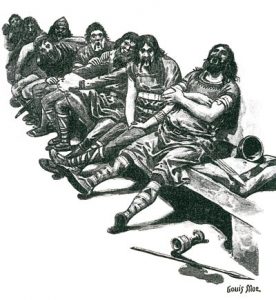 “These men asked Halfdan to attack Hardbeen and his champions man by man; and he not only promised to fight, but assured himself the victory with most confident words. When Hardbeen heard this, a demoniacal frenzy suddenly took him; he furiously bit and devoured the edges of his shield; he kept gulping down fiery coals; he snatched live embers in his mouth and let them pass down into his entrails; he rushed through the perils of crackling fires; and at last, when he had raved through every sort of madness, he turned his sword with raging hand against the hearts of six of his champions. It is doubtful whether this madness came from thirst for battle or natural ferocity.”
“These men asked Halfdan to attack Hardbeen and his champions man by man; and he not only promised to fight, but assured himself the victory with most confident words. When Hardbeen heard this, a demoniacal frenzy suddenly took him; he furiously bit and devoured the edges of his shield; he kept gulping down fiery coals; he snatched live embers in his mouth and let them pass down into his entrails; he rushed through the perils of crackling fires; and at last, when he had raved through every sort of madness, he turned his sword with raging hand against the hearts of six of his champions. It is doubtful whether this madness came from thirst for battle or natural ferocity.”

 de France. In one of her lais, Bisclavret, a man-turned-werewolf is prevented from returning to his shape of birth by an unfaithful lover hiding his clothes. You see, when it comes to masking and its sibling, shapeshifting,
de France. In one of her lais, Bisclavret, a man-turned-werewolf is prevented from returning to his shape of birth by an unfaithful lover hiding his clothes. You see, when it comes to masking and its sibling, shapeshifting,  ”Woden worhte weos, wuldor alwalda,
”Woden worhte weos, wuldor alwalda, the island of Sámsey. There they encounter a ‘tree-man’ who speaks to them of his purpose and origin. He was the product of sacrifice, and had been made to bring about the deaths of men in the southern part of Sámsey. But over the years, he’d become overgrown and his clothes and flesh rotted away.
the island of Sámsey. There they encounter a ‘tree-man’ who speaks to them of his purpose and origin. He was the product of sacrifice, and had been made to bring about the deaths of men in the southern part of Sámsey. But over the years, he’d become overgrown and his clothes and flesh rotted away. makes the sacrifices until he receives a favorable oracle when he has a piece of driftwood brought in and fashioned into the shape of a wooden man. Then with “the monstrous witchcraft and python’s breath” of those two sisters, as well as the heart of a man sacrificed for the purpose and the proper attire for a man, they sent their tree-man, now named Þorgarðr, into the world to kill Þorleif (North 93 – 95).
makes the sacrifices until he receives a favorable oracle when he has a piece of driftwood brought in and fashioned into the shape of a wooden man. Then with “the monstrous witchcraft and python’s breath” of those two sisters, as well as the heart of a man sacrificed for the purpose and the proper attire for a man, they sent their tree-man, now named Þorgarðr, into the world to kill Þorleif (North 93 – 95).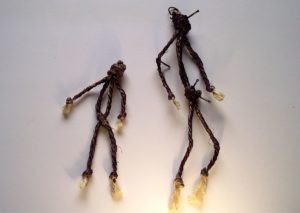
 Hulle set not far from Wintersbach. And this is the tale that led me down the rabbithole so to speak. First came the spinning, and then more research and a pilgrimage of sorts to the Hollenteich up on the Hoher Meißner. There, on a frozen pond before a modern statue, I had a deeply holy (and unexpected) experience.
Hulle set not far from Wintersbach. And this is the tale that led me down the rabbithole so to speak. First came the spinning, and then more research and a pilgrimage of sorts to the Hollenteich up on the Hoher Meißner. There, on a frozen pond before a modern statue, I had a deeply holy (and unexpected) experience. But one day, while spinning at the side of a well, she accidentally drops her spindle into the well after pricking her finger.
But one day, while spinning at the side of a well, she accidentally drops her spindle into the well after pricking her finger. made sure to cut herself and throw a spindle into the well before she herself took the plunge is perhaps telling.
made sure to cut herself and throw a spindle into the well before she herself took the plunge is perhaps telling. First the dead pass over a thorny moor (‘Whinny muir’) that will prick them. Then they must pass over the ‘Brig o’Dread’. And then finally, because this is a Christian song, they must roast in Purgatory for a while. But at every turn, these tortures can be mitigated by one’s behavior in life. Those who gave the charity of socks and shoes (‘hosen or shoon’) will find socks and shoes to protect them on the thorny moor. Those who gave the charity of food and drink, will not be shrunk and burned by Purgatory’s fires. (The Brig o’Dread is its own challenge, and I’ll be taking a look at it in the next section.)
First the dead pass over a thorny moor (‘Whinny muir’) that will prick them. Then they must pass over the ‘Brig o’Dread’. And then finally, because this is a Christian song, they must roast in Purgatory for a while. But at every turn, these tortures can be mitigated by one’s behavior in life. Those who gave the charity of socks and shoes (‘hosen or shoon’) will find socks and shoes to protect them on the thorny moor. Those who gave the charity of food and drink, will not be shrunk and burned by Purgatory’s fires. (The Brig o’Dread is its own challenge, and I’ll be taking a look at it in the next section.) century Icelandic poet Þórbjörn Brúnason made a curious mention of the ‘apples of Hel’. And apples also featured as grave goods in both Scandinavian and early English graves. But apples are not only associated with the dead in Norse lore. The apple seems to be both a food for the dead and a substance of renewal for the gods.(Davidson, Gods and Myths of Northern Europe, 165-166).
century Icelandic poet Þórbjörn Brúnason made a curious mention of the ‘apples of Hel’. And apples also featured as grave goods in both Scandinavian and early English graves. But apples are not only associated with the dead in Norse lore. The apple seems to be both a food for the dead and a substance of renewal for the gods.(Davidson, Gods and Myths of Northern Europe, 165-166). ”Readers familiar with Neil Gaiman’s Sandman series might find some parallels here: the mundus imaginalis is like “The Dreaming,” a realm populated by the dreaming of every being, living or dead, god or human or plant, where each “place” has a geography only inasmuch as it’s necessary for those who visit to travel within it and find the same place again (or visit a place another once visited). In fact, Gaiman likely stole the entire idea for his cosmology from Corbin’s essay.”
”Readers familiar with Neil Gaiman’s Sandman series might find some parallels here: the mundus imaginalis is like “The Dreaming,” a realm populated by the dreaming of every being, living or dead, god or human or plant, where each “place” has a geography only inasmuch as it’s necessary for those who visit to travel within it and find the same place again (or visit a place another once visited). In fact, Gaiman likely stole the entire idea for his cosmology from Corbin’s essay.” of map to this road to the afterlife. First the person dies/passes through water, and then they encounter two different trials. Yet the trials in both sources are far from insurmountable, presenting little problem for the compassionate person.
of map to this road to the afterlife. First the person dies/passes through water, and then they encounter two different trials. Yet the trials in both sources are far from insurmountable, presenting little problem for the compassionate person.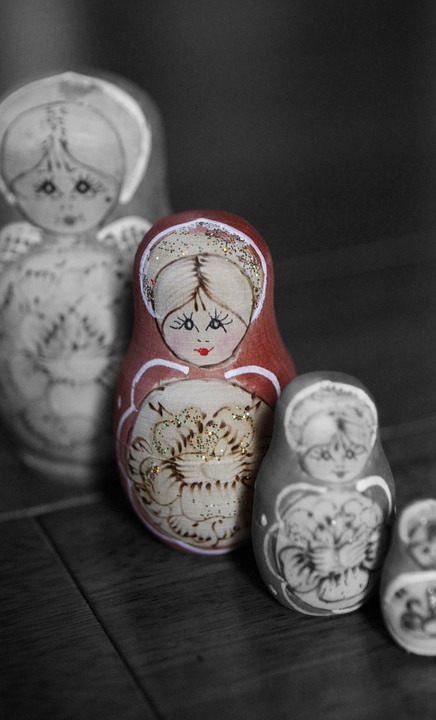
 and discussion. So if you’ve got an hour or so (it’s probably going to be between 1-2 hours) on 9/15 at around 3pm, join me for a crazed exploration of the history, purpose, and ways in which magic circles can be tweaked. Can’t make it? The class will be recorded so participants can listen later!
and discussion. So if you’ve got an hour or so (it’s probably going to be between 1-2 hours) on 9/15 at around 3pm, join me for a crazed exploration of the history, purpose, and ways in which magic circles can be tweaked. Can’t make it? The class will be recorded so participants can listen later!

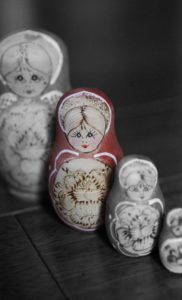 Legitimate lineages (however they’re judged) can be excellent for a number of reasons though. Because not only do you have access to a far more systematic way of learning, but you also have the safety nets of more experienced elders as well as the lineage itself. If you are interested in a tradition that has lineages then you should absolutely do the work and enter in the correct way. In some cases, it can actually be dangerous to you if you don’t.
Legitimate lineages (however they’re judged) can be excellent for a number of reasons though. Because not only do you have access to a far more systematic way of learning, but you also have the safety nets of more experienced elders as well as the lineage itself. If you are interested in a tradition that has lineages then you should absolutely do the work and enter in the correct way. In some cases, it can actually be dangerous to you if you don’t.
 England, and I was the weird kid everyone else came to ask about getting the “power of Manon” when the movie The Craft came out.
England, and I was the weird kid everyone else came to ask about getting the “power of Manon” when the movie The Craft came out.


 through the bottom of my boots. Then (usually at the top of a hill), I would fall to the ground to thank the hills when the knots around my heart lifted.
through the bottom of my boots. Then (usually at the top of a hill), I would fall to the ground to thank the hills when the knots around my heart lifted.
 beings that inhabit them. And a place and its inhabitants may be one way on one day, and completely different on another day. Even if you’ve been somewhere before, never assume that a place is going to be or feel the same when you go back there. Keep on top of your basic witchy skills, and
beings that inhabit them. And a place and its inhabitants may be one way on one day, and completely different on another day. Even if you’ve been somewhere before, never assume that a place is going to be or feel the same when you go back there. Keep on top of your basic witchy skills, and vending machines for favors (in exchange for some pretty subpar offerings)?
vending machines for favors (in exchange for some pretty subpar offerings)?
 over but cohabiting with. Where are you in your “neighborhood”? Who do you need to avoid pissing off and who do you need to give a little more care and attention to?
over but cohabiting with. Where are you in your “neighborhood”? Who do you need to avoid pissing off and who do you need to give a little more care and attention to?

 isolation, mine sees each tree as it is: connected through roots and mycorrhizal fungi to other trees. Trees that have been found to provide mutual aid to each other regardless of tree ‘type’.
isolation, mine sees each tree as it is: connected through roots and mycorrhizal fungi to other trees. Trees that have been found to provide mutual aid to each other regardless of tree ‘type’. The word Jötunn is thought to come from the Proto-Germanic *etunaz, which is in turn thought to be semantically connected to the Proto-Germanic *etanan, or ‘greedy’, ‘voracious’, ‘gluttonous’, ‘consuming’. Although the above snippet from Völuspá pertains to Ragnarök, it is also relevant here.
The word Jötunn is thought to come from the Proto-Germanic *etunaz, which is in turn thought to be semantically connected to the Proto-Germanic *etanan, or ‘greedy’, ‘voracious’, ‘gluttonous’, ‘consuming’. Although the above snippet from Völuspá pertains to Ragnarök, it is also relevant here. produce with little concession to human wants or needs. Productivity and profit have become king now, and people work like cattle but then struggle to survive regardless of their labor.
produce with little concession to human wants or needs. Productivity and profit have become king now, and people work like cattle but then struggle to survive regardless of their labor.
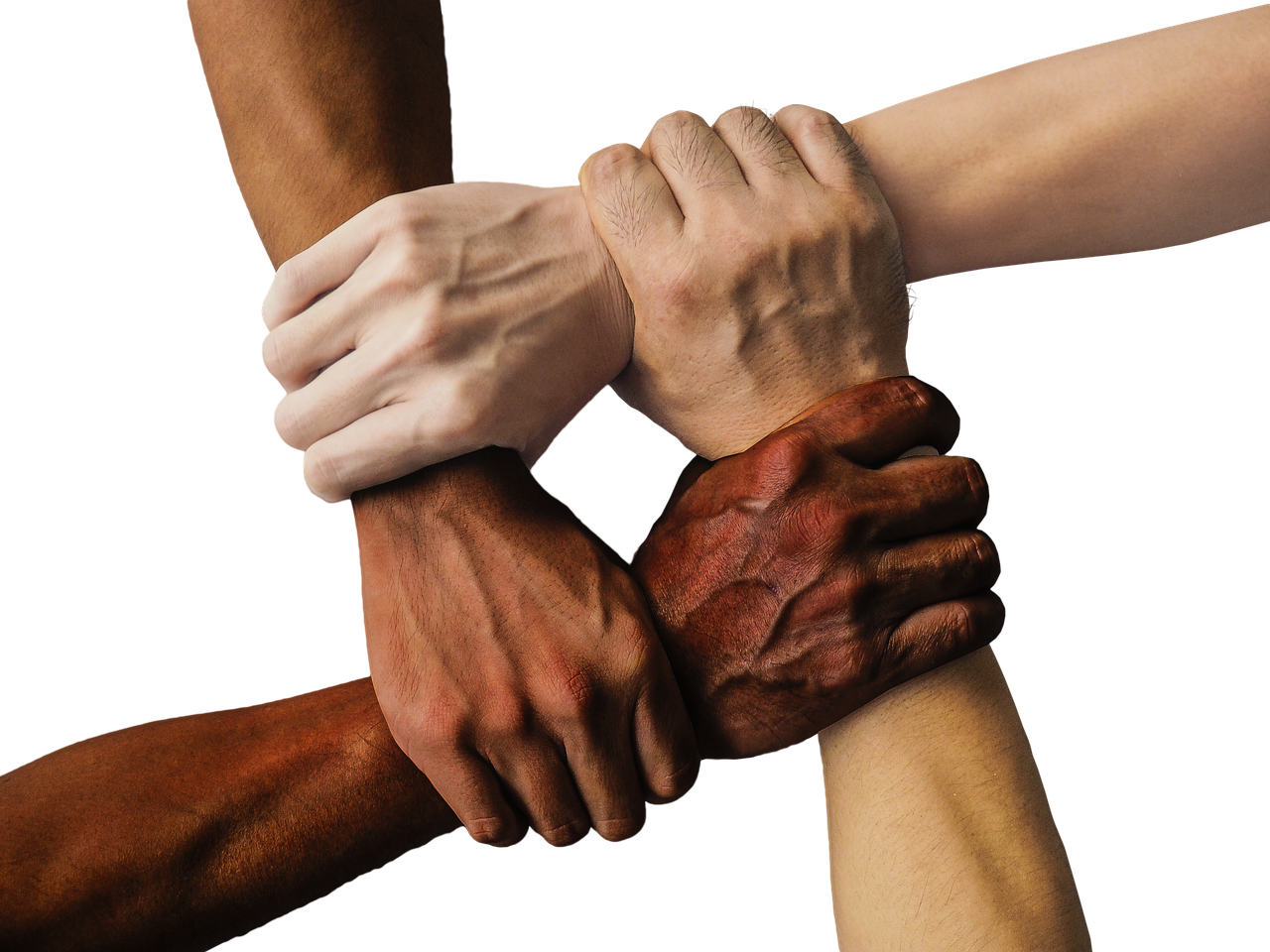


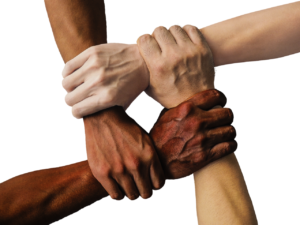 actually been the source of many negative forms of collectivism. This is what underpins ethno-nationalism, and we don’t need to go there in order to have communities in which we share genuine bonds of friendship and love.
actually been the source of many negative forms of collectivism. This is what underpins ethno-nationalism, and we don’t need to go there in order to have communities in which we share genuine bonds of friendship and love.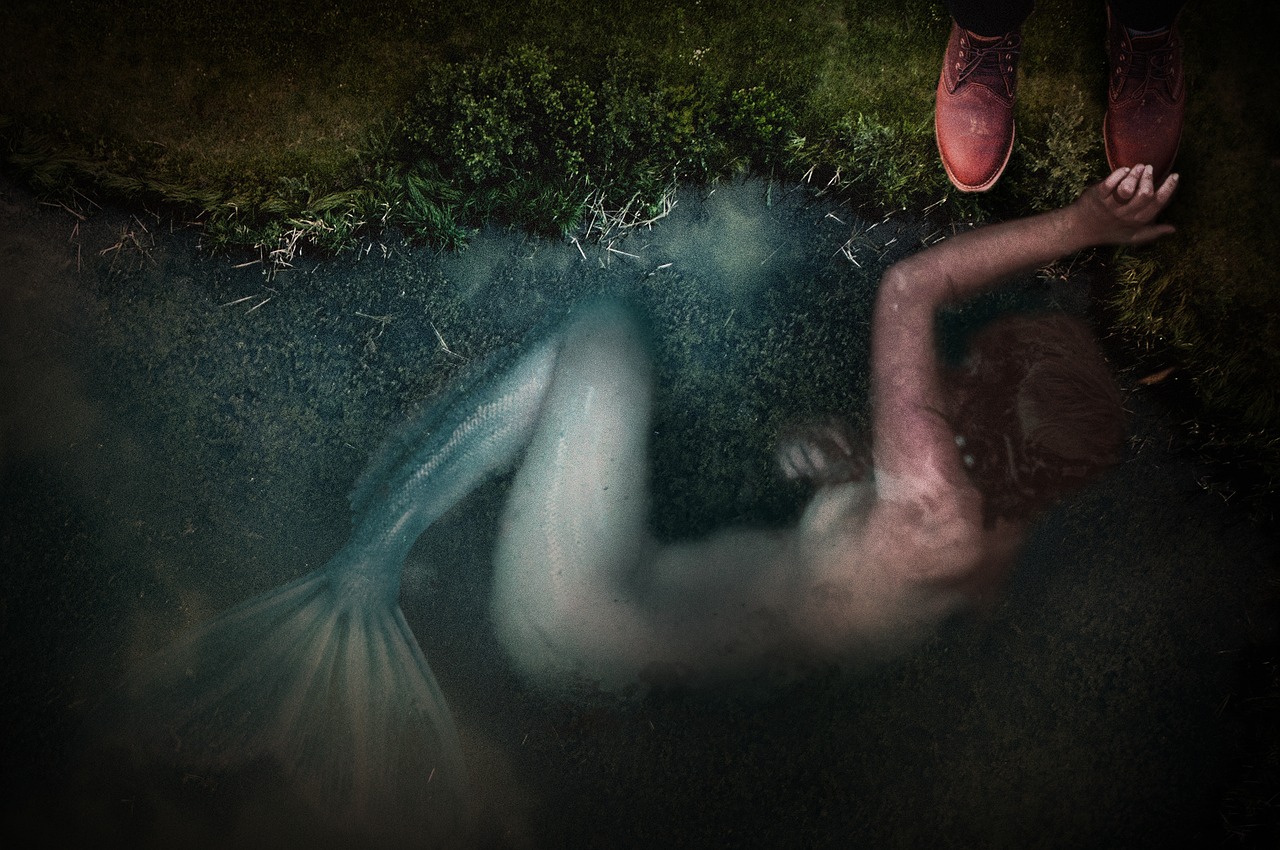


 that entertainment media is focusing on similar things. Are people really seeing that stuff, or are those things arising from the energy and belief of the consensus and becoming entities in their own right? Who knows? It’s kind of like Schroedinger’s cat in that we just don’t know and cannot know without somehow opening “the box”. But ultimately it doesn’t matter either – especially for magic workers. Because we tend to have to work with what we encounter, in the form in which we encounter it, and at the time when we encounter it regardless.
that entertainment media is focusing on similar things. Are people really seeing that stuff, or are those things arising from the energy and belief of the consensus and becoming entities in their own right? Who knows? It’s kind of like Schroedinger’s cat in that we just don’t know and cannot know without somehow opening “the box”. But ultimately it doesn’t matter either – especially for magic workers. Because we tend to have to work with what we encounter, in the form in which we encounter it, and at the time when we encounter it regardless.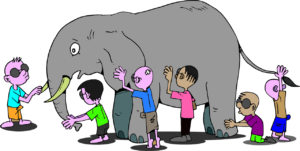

 magical attack. Because if you place too much belief in the possibility of being cursed or attacked, then it’s all too easy to see malefic magic and psychic attack at every turn and become paranoid. There’s also a lot to be said for self-fulfilling prophecy here – especially with the more magically-minded. But if you refuse to even consider the possibility, then you run the risk of missing some of the earlier warnings and allowing things to become far worse.
magical attack. Because if you place too much belief in the possibility of being cursed or attacked, then it’s all too easy to see malefic magic and psychic attack at every turn and become paranoid. There’s also a lot to be said for self-fulfilling prophecy here – especially with the more magically-minded. But if you refuse to even consider the possibility, then you run the risk of missing some of the earlier warnings and allowing things to become far worse. This is where it gets pretty tricky, and also why you shouldn’t just rely on one thing when assessing whether or not you’ve been cursed. However, a good starting question to ask yourself is if what is happening is logical given the surrounding causes and conditions. For example, if you happen to lose your job and your house is foreclosed on during a time of economic downturn, it’s easy to see the circumstances at the root of your situation.
This is where it gets pretty tricky, and also why you shouldn’t just rely on one thing when assessing whether or not you’ve been cursed. However, a good starting question to ask yourself is if what is happening is logical given the surrounding causes and conditions. For example, if you happen to lose your job and your house is foreclosed on during a time of economic downturn, it’s easy to see the circumstances at the root of your situation. by accident from others, or the result of a curse directed at you.
by accident from others, or the result of a curse directed at you.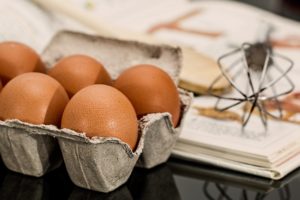 dying off, then there’s a chance that someone is working against you. This is especially the case when this happens in conjunction with any of the other factors mentioned here. Some folks also keep an egg on their altar as a kind of hex alarm and watch for it breaking. Of course, you may go through quite a few eggs, and will need to remember to change them out if you opt to do this.
dying off, then there’s a chance that someone is working against you. This is especially the case when this happens in conjunction with any of the other factors mentioned here. Some folks also keep an egg on their altar as a kind of hex alarm and watch for it breaking. Of course, you may go through quite a few eggs, and will need to remember to change them out if you opt to do this.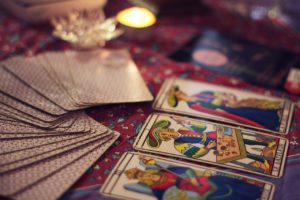 often forgotten. And I get it, it’s easy to lose your head when you suspect that magic is being thrown around – especially if you’re already a little battle-scarred before figuring out what’s going on. However, if someone is working against you and you give into that fear, you help them in their cause.
often forgotten. And I get it, it’s easy to lose your head when you suspect that magic is being thrown around – especially if you’re already a little battle-scarred before figuring out what’s going on. However, if someone is working against you and you give into that fear, you help them in their cause.